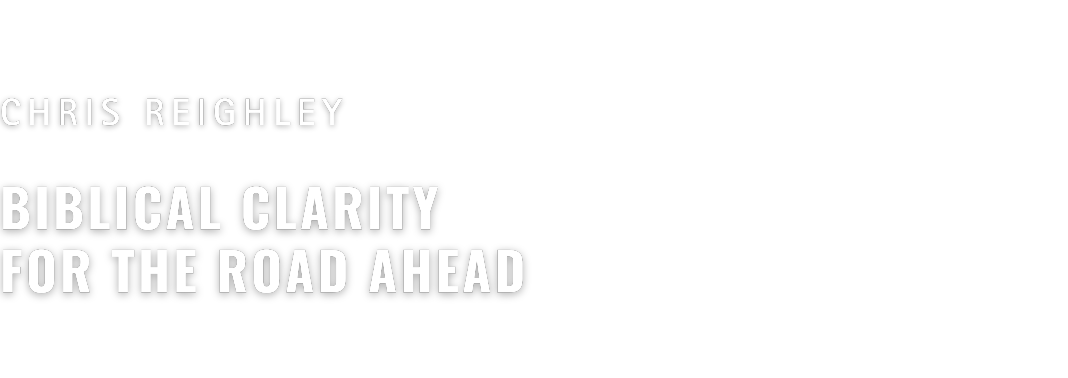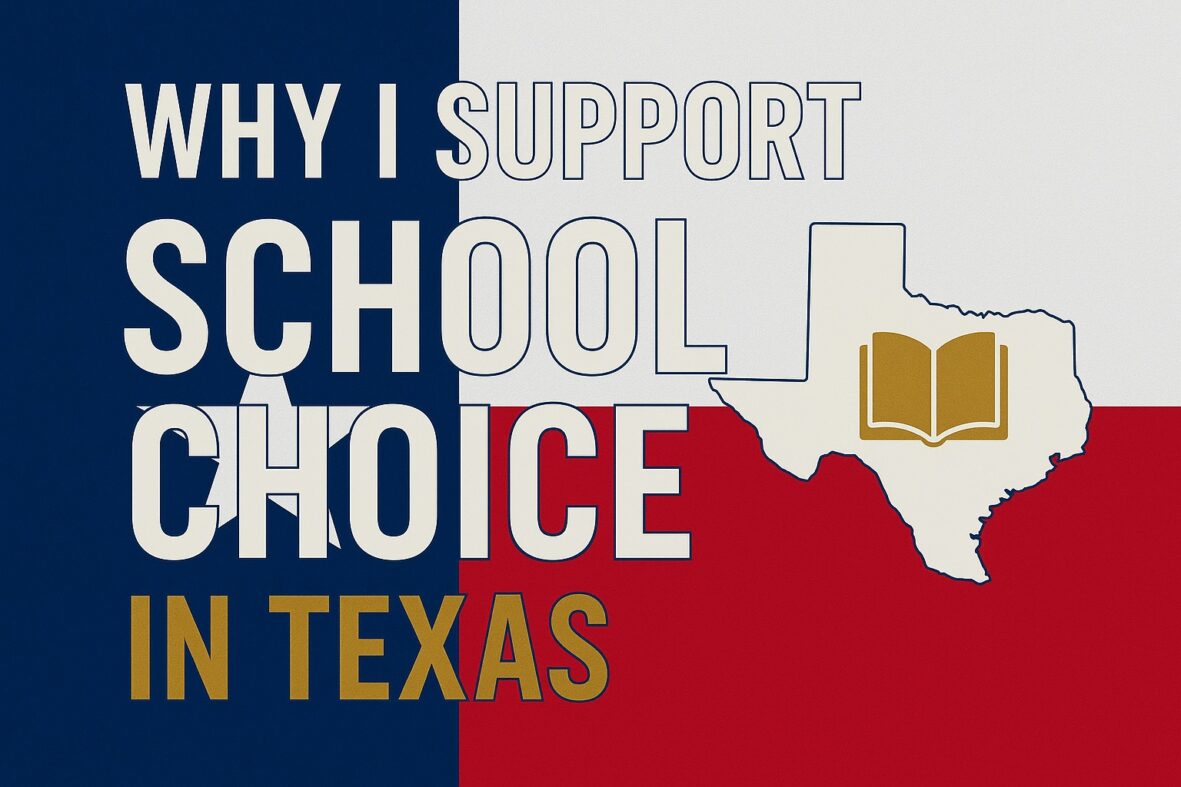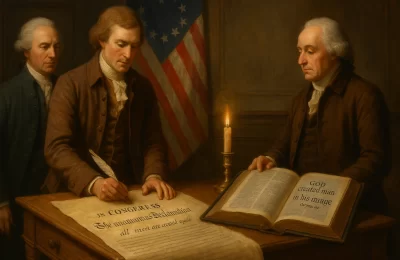School choice has become a hotly debated topic in Texas. As a father, a person of faith, and a concerned citizen, I approach this issue with a blend of pastoral care and political scholarship. I have listened to the worries of fellow Christians who fear that school choice might harm public schools or lead to inequity. I have also studied the data and history surrounding education in our state and nation. My conclusion is clear: I support school choice in Texas. I do so not out of political fashion, but from deep convictions about biblical parental responsibility, historical precedent, educational decline, justice for families, and fidelity to both our state constitution and our faith. In this article, I’ll explain why – walking through a biblical theology of education, America’s educational foundations, the current decline in public schooling, common objections (and responses) to school choice, the Texas Constitution’s provisions, and why school choice is more than a policy preference for me, but a matter of stewardship and justice.
Biblical Foundations: Parents’ Responsibility in Education
As Christians, we believe that God entrusts children to parents and charges parents with the primary responsibility for their education – especially their moral and spiritual formation. The Bible is replete with instructions to this effect. For example, Moses exhorted Israelite parents:
“These words, which I am commanding you today, shall be on your heart. You shall teach them diligently to your sons and shall speak of them when you sit in your house and when you walk by the way and when you lie down and when you rise up”
Deuteronomy 6:6–7
Likewise, the Apostle Paul commands fathers to
“bring [children] up in the discipline and instruction of the Lord”
Ephesians 6:4
and he warns believers to
“see to it that no one takes you captive through philosophy and empty deception, according to the tradition of men… and not according to Christ”
Colossians 2:8
These scriptures establish a biblical theology of education: parents are tasked by God to teach their children His truth, guarding them against false ideologies and guiding them toward wisdom.
This biblical mandate has practical implications. It means education is not a morally neutral endeavor – it is discipleship. Whether children are learning math, reading, history, or science, they are also absorbing a worldview. Jesus said a student will become like his teacher (Luke 6:40), underscoring that whoever controls the educational content and context has great influence on a child’s heart and mind. Traditionally, American public schools cooperated with parents in reinforcing basic Judeo-Christian moral values. But in recent decades, many Christian parents have grown concerned that the public education system has drifted from, or even stands opposed to, the values they are charged to instill in their kids. From confusion about sex and gender, to secular philosophies taught as truth, to outright hostility toward biblical perspectives, there is moral confusion in many curricula today. As one study noted, only one-third of Gen Z teens now believe lying is morally wrong, compared to 61% of the elder generation. Such statistics suggest that our youth are absorbing a relative, individualistic moral code at odds with the biblical worldview.
Because God will hold parents accountable for how they train up their children (cf. Prov. 22:6), parents must have the freedom to choose an education aligned with their faith and values. School choice – allowing public education funds to follow the student to a school of the family’s choice (be it public, private, charter, or homeschool) – empowers parents to fulfill their Deuteronomy 6 and Ephesians 6 responsibilities. It recognizes that parents are the primary educators, and the state is a supporting partner, not a monopolistic parent. Far from abandoning the public school system, school choice properly situates it as one means among many to educate children. If a public school is providing excellent academic and moral instruction, parents may happily choose it; if not, parents can choose a better option without losing the financial resources their tax dollars provided. In short, a biblical view of education assigns the ultimate responsibility to parents, and school choice policies honor that by giving parents authority to direct their child’s education. This is an expression of parental stewardship before God.
Historical Foundations of Education in America
Appealing to history, we find that the idea of parent-directed education is not new or radical – it is woven into the American tradition. The earliest American educators and statesmen saw education as a partner to faith and morality. Noah Webster, often called the “Father of American Scholarship and Education,” famously stated,
“Education is useless without the Bible. The Bible was America’s basic textbook in all fields. God’s Word, contained in the Bible, has furnished all necessary rules to direct our conduct.”
Webster believed that knowledge of Scripture was essential to a child’s education and to the health of the nation. Similarly, Dr. Benjamin Rush – a signer of the Declaration of Independence and an early advocate for public schooling – argued that the Bible should be read in schools daily. He warned,
“If we were to remove the Bible from public schools we would be wasting so much time punishing crimes and taking so little pains to prevent them.”
In other words, ignoring moral and religious instruction would lead to social decay, requiring costly intervention later. These Founders viewed religion, virtue, and knowledge as interdependent pillars of education.
Early American laws echoed this perspective. The Northwest Ordinance of 1787, which laid the blueprint for governance in new territories, famously asserted: “Religion, morality, and knowledge, being necessary to good government and the happiness of mankind, schools and the means of education shall forever be encouraged.” This statement, enacted by the Congress of the Confederation, affirms that education was meant to uphold religion and morality alongside academic knowledge. The implication is that education devoid of moral foundation was unthinkable to the early American mind. Public schools in the 18th and 19th centuries often used readers and textbooks containing biblical stories and moral lessons. For example, the McGuffey Readers (widely used in the 1800s) included Scripture quotations and moral axioms. Education was seen as fundamentally linked to a higher purpose: forming virtuous, informed citizens who could sustain the republic.
It’s also worth remembering that formal public schooling as we know it today did not fully emerge until the mid-19th century. In the colonial and founding eras, most education was locally organized, often by churches or communities, or done at home. Parents had broad authority over their children’s learning, whether through church-sponsored schools, private tutors, apprenticeships, or home instruction. The concept of universal public schools funded by tax dollars grew in the 1830s–1850s (led by figures like Horace Mann), and even then, the Bible and prayer were commonly part of the early public school experience. It wasn’t until the 20th-century court decisions (e.g., removing school prayer in 1962) that public education became assertively secular.
I highlight this history to make an important point: School choice is consistent with our American heritage. Allowing families to choose religious or private education at public expense is not a betrayal of our past principles, but rather a return to them. The Founders did not intend for government to hold a monopoly on education. On the contrary, they believed education should cultivate virtue and faith – something best done in partnership with families and religious communities. In many ways, modern school choice programs (vouchers, education savings accounts, etc.) revive the pluralism that characterized early American education, where different types of schools (including religious schools) worked toward the common goal of an educated, moral citizenry.
Indeed, the pluralism still exists in higher education: Federal Pell Grants and the G.I. Bill have long allowed students to use public funds at religious or private universities without controversy. No one says a college student must attend a state-run university to receive public support. Yet for K-12, we have locked ourselves into a residentially-assigned system that often leaves low-income families with no alternative if the local public school is failing. Remembering our roots reminds us that education was never meant to be one-size-fits-all. It was meant to uphold truth and virtue – and that requires freedom to choose a school aligned with one’s values.
The Decline of Public Education in Texas and the U.S.
Many families would perhaps be content with their local public schools if those schools were consistently excellent. But the sobering reality is that by many measures, public education is in decline – in Texas and nationwide. This isn’t a gleeful observation (indeed, it should break our hearts), but it’s a factual one we must confront if we care about the next generation. Both academic outcomes and indicators of civic and moral formation have worsened in recent years.
Let’s talk academics first. Texas students have struggled to maintain proficiency in core subjects. In 2022, after years of effort, only 47% of Texas students in grades 3-8 were reading on grade level, meaning more than half were behind . The disruptions of the COVID-19 pandemic set us back even further – by 2021, only 39% of 3rd–8th graders were reading on grade level. Math scores saw an even sharper drop, with proficiency falling from 50% pre-pandemic to just 35% performing at grade level in math. National assessments tell a similar story. The National Assessment of Educational Progress (NAEP), often called the “Nation’s Report Card,” showed that in 2024 Texas eighth-graders’ math scores hit their lowest point in over a decade – continuing a decline dating back to 2011. Eighth-grade reading scores also fell by 3 points from 2022 to 2024. In fact, no state in the country saw reading improvements in that period, as overall literacy took a hit. These drops are not mere statistics; they represent thousands of students who are not learning to read, write, and compute at an adequate level.
The academic decline has practical consequences. Students who fall behind in elementary and middle school often struggle in high school, and many require remedial classes if they reach college. Employers increasingly complain that high school graduates lack basic skills needed for the workforce. And from a civic standpoint, students with poor educational foundations may become adults who struggle to participate in our democracy or reach their God-given potential. Texas, like much of the nation, is facing a literacy and numeracy crisis. Gabe Grantham, a policy adviser for the nonpartisan group Texas 2036, noted that the overall picture is alarming: Texas students “need more support from both schools and the state to build strong reading and math foundations” . I would add that parents and churches need to be part of that support as well. The question is: will we continue doing the same things and hope for different results, or try a new approach that empowers families?
Academics are only one facet of the problem. Civic and moral knowledge has also deteriorated. Our public schools were originally tasked not just with producing good workers, but good citizens and good human beings. Yet today we see widespread civic illiteracy. A recent national survey by the University of Houston and U.S. Chamber Foundation found that over 70% of Americans could not pass a basic civic literacy quiz on the fundamentals of our government . One in three adults did not even know that we have three branches of government! This points to a failure to impart essential civic knowledge. Texas is not exempt; the Texas Public Policy Foundation found in a 2019 poll that 65% of Texans believe we must “do better at providing civic education” to our youth (Martinez, 2019). Such civic ignorance is dangerous for a free republic – our liberties cannot be preserved if rising generations don’t understand how our government works or value their responsibilities as citizens.
Moreover, moral confusion and cultural fragmentation have increased. When schools shy away from teaching any clear moral framework – or when they adopt the ever-shifting values of secular culture – children are left without anchor or compass. We see the results: increases in youth anxiety, identity crises, and a lack of shared ethical standards. A Barna Group study observed that relativism is now the majority opinion among young Americans; nearly three-quarters of young adults say that morality is relative, changing with society’s whims . Is it any wonder we face rising rates of depression and conflict, when children are told to “live your truth” but given no foundation of absolute truth or purpose? Public schools, legally restricted from acknowledging God or biblical morality, often find themselves unable to offer any substantive moral guidance to fill this void. In some cases, they introduce trendy ideologies about race, gender, or sexuality that only deepen controversies and confusion (as Texas has seen with debates over library books and curricula).
To be clear, I am not blaming individual teachers – many heroic teachers in public schools do their best to instill character and critical thinking. But they operate within a system that has largely cut itself off from the transcendent source of truth. When “God is dead” in the classroom, something else fills the vacuum – be it consumerism, political ideology, or moral relativism. The result is a generation less grounded in the principles of right and wrong that build strong families and communities.
This decline in academic, civic, and moral outcomes weighs heavily on my heart. As a pastor, I grieve for the students falling through the cracks – those who can’t read the Bible (or any book) confidently, those who don’t know the story of our country or the values that underpin a free society, those who are tossed about by every new cultural wave. As a Texan, I also worry for our state’s future. Will we have an educated workforce and an informed electorate 20 years from now? If current trends continue, we may not. Something has to change. We owe it to our children to try new approaches that can reverse these declines. In my view, one of the most promising approaches is to expand educational freedom – to let parents choose schools that will best serve their kids, and thereby introduce healthy competition and innovation into the education sector. School choice alone is not a silver bullet (we also need curricular reform, better teacher support, etc.), but it is a necessary part of the solution. It allows families to immediately find a better fit for their children, rather than waiting on a system that has been slow to improve.
Answering Common Objections to School Choice
Understandably, not everyone is on board with school choice. Some of my dear friends and fellow conservatives have reservations. Before I fully supported the idea, I wrestled with these questions myself. In this section, I want to address a few of the most common objections to school choice, offering both logical and theological rebuttals to each:
- Objection 1:
“School choice will harm public schools by draining funding.” This is perhaps the most frequently cited concern. Public schools in Texas are funded largely on a per-student basis – dollars follow attendance. Critics argue that if students leave for private schools with vouchers or Education Savings Accounts (ESAs), the public schools will lose money and end up even worse off, hurting the kids left behind.
Rebuttal: It’s important to put this in perspective. Funding for education is intended to benefit students, not to prop up particular institutions. If a student leaves a public school, that school may receive less money, but it also has one fewer student to educate. The funding follows the child to their new school where it will pay for that child’s education. This is how funding already works when a family moves from one district to another; no one suggests a family must stay put for the school’s sake. Furthermore, competition created by school choice can spur public schools to improve. A review of research in the Journal of Economic Literature found evidence that as competition from voucher programs increases, public school test scores tend to slightly improve . In 26 of 29 studies on this topic, the introduction of private school choice had positive effects on the performance of nearby public schools . Why? Because when schools know parents have options, they have a stronger incentive to innovate and serve students well. In Florida, for instance, public schools raised their game when a tax-credit scholarship program expanded (Figlio & Hart, 2014). Logically, a system that monopolizes students and funding has less pressure to respond to feedback; choice reintroduces that feedback loop via market dynamics. Theologically, we should remember that justice for the individual child matters more than the preservation of an institution. If a school is failing to provide a good education or a safe environment, is it right to force a child to stay there for the “greater good” of the school? I would argue no. Each child is made in the image of God and deserves an opportunity to thrive. Our focus should be on students, not systems. If public schools are concerned about losing students, the solution is to address the reasons parents might choose to leave – which choice actually encourages them to do. Finally, note that Texas in particular has a robust public school funding mechanism (including a Permanent School Fund and local property taxes) that is not simply zero-sum per pupil; the state can adjust funding formulas to cushion any temporary losses. In states that have adopted vouchers/ESAs, public schools continue to operate – often with even higher per-student spending on those who remain. - Objection 2:
“School choice will increase inequality or only help the wealthy.” Some fear that vouchers will mostly be used by families who already have means, or that private schools will cherry-pick students, leaving behind the hardest-to-teach (such as those with special needs or English language learners). They worry about a two-tier system of haves and have-nots.
Rebuttal: In reality, the status quo is already inequitable. Right now, affluent families already have school choice – they can afford to move to a neighborhood with a top-rated public school or pay for private school tuition. It’s low-income and middle-class families who are stuck with one option. A well-designed school choice program can actually reduce inequality by giving financial assistance to those who otherwise couldn’t afford alternatives. For example, a University of Houston/Texas Southern University survey in 2023 found that 60% of Black Texans and 56% of Millennials support school vouchers for low-income parents, higher support than among White or older voters . Minority and young communities — those who have historically been underserved by public schools — are strongly in favor of choice. That indicates school choice is viewed by many as a path to greater equity, not less. It’s telling that in states like Florida and Arizona, thousands of low-income families have used scholarships to move their kids from underperforming public schools into schools (public or private) that better meet their needs. On the concern that wealthy families will benefit: most legislative proposals address this by targeting aid to lower-income households or capping income eligibility (at least initially). Even a universal program helps poor families because it normalizes the idea of choice and increases the supply of alternative schools (making it easier for new affordable private schools to open). Another aspect of equity is ensuring children with special needs are served. Notably, Texas already allows some special-needs students to use education savings accounts (the “Supplemental Special Education Services” program). Many parents of children with disabilities support choice because it lets them select specialized therapies or schools tailored to their child, rather than a one-size-fits-all program. The goal of school choice is not to abandon public education’s commitment to all children, but to fulfill it in partnership with private and faith-based institutions. Every child is unique, and justice demands that we give families the ability to seek out the best environment for each child. Instead of forcing everyone into one system in the name of “equality,” true equality of opportunity means opening more doors, not locking kids in by their ZIP code. - Objection 3:
“Private schools lack accountability.” Detractors point out that public schools must adhere to state accountability standards (standardized testing, curriculum oversight, public audits, etc.), whereas a private or homeschool receiving public funds might not be subject to the same level of scrutiny. They worry that this could lead to misuse of funds or subpar educational quality with no public recourse.
Rebuttal: This argument assumes that bureaucratic oversight is the only or best form of accountability. But consider how accountability works in other areas of life: we hold restaurants accountable not by a government inspector sitting in every kitchen daily, but by empowering customers to choose where to eat (backed up by health and safety regs). Schools should certainly meet basic safety and financial transparency requirements if they receive public money – and choice programs typically include those. However, the strongest form of accountability in education is parental accountability. If a school (public or private) is doing a poor job, parents can “vote with their feet” and transfer their children. That’s an immediate and powerful consequence, far more direct than waiting for a state report card or a bureaucratic shuffle. When parents have choice, schools must answer to the families they serve every single day. Additionally, numerous empirical studies have shown that school choice tends to increase parental satisfaction . Parents are happier when they can choose a school aligned with their expectations – that’s a form of accountability to community desires. From a Christian perspective, placing trust in parents aligns with our belief in the family unit ordained by God. God entrusted children to parents, not to state officials. Of course, the state can and should ensure that minimal educational standards are met (e.g. learning basic reading and math) and handle extreme cases (like educational neglect). But beyond that, giving parents freedom tends to raise standards, not lower them, because parents have high stakes in their child’s success. It is also worth noting that many private schools voluntarily participate in accreditation programs and nationally normed tests (like the SAT/ACT, AP exams) which provide benchmarks of quality. And if a particular private school performs poorly academically, its reputation will suffer and it will fail to attract students in a choice environment. Meanwhile, truly failing public schools often stay open for decades due to political and bureaucratic inertia, while generations of students suffer. That is the ultimate lack of accountability. In summary, choice doesn’t remove accountability – it shifts it from centralized bureaucracy to parents and local communities. I believe that’s a healthy shift, consistent with honoring subsidiarity and parental authority. - Objection 4:
“School choice is a thinly veiled attempt to fund religious schools with public money, violating separation of church and state (or the Texas Constitution).” This concern is often raised by those wary that vouchers will primarily flow to church-affiliated schools, thus blurring lines between government and religion. In Texas, Article VII, Section 5 of our Constitution even says that public school funds may not be used for any sectarian school .
Rebuttal: The legal landscape on this issue has evolved. Modern school choice programs are crafted to be neutral with respect to religion – the state isn’t funding a religious school directly; rather, it gives funds to parents, and parents independently choose the school (religious or non-religious) they want. The U.S. Supreme Court has upheld this model, comparing it to Pell Grants or scholarships that students use at religious colleges (Zelman v. Simmons-Harris, 2002). In fact, recent Supreme Court rulings (Espinoza v. Montana, 2020; Carson v. Makin, 2022) have held that if a state decides to offer school choice, it cannot exclude religious schools from participation simply because they are religious, as that would be discriminatory. So at the federal level, including faith-based schools is constitutionally permissible and even required for neutrality. As for the Texas Constitution, the clause about not appropriating the Permanent School Fund to sectarian schools dates to the 19th century and was intended to prevent direct state funding of church-run schools. But an ESA or voucher today would likely be funded from general revenue or a special fund, not from the Permanent School Fund or Available School Fund that Section 5 references. Lawmakers can craft legislation to comply with the state constitution (for example, by making the voucher technically a reimbursement or tax credit to parents). Several other states with similar constitutional language (often called “Blaine Amendments”) have successfully implemented voucher programs. Arizona, for instance, has a universal ESA despite a constitutional clause against funding religious schools, because the money is seen as aiding the student, not the school. The key principle is that the benefit is for the child’s education, at the school of the family’s choice. No one is coercing religion on anyone; rather, the state is respecting pluralism by letting families decide. Far from undermining the separation of church and state, this approach upholds religious liberty while still pursuing the state’s interest in educated citizens. And practically speaking, many religious schools have a track record of academic success and character formation – partnering with them can be a win-win for society. Even someone who is not personally religious might support school choice because it harnesses the strengths of diverse educational providers (religious included) to serve the public good. - Objection 5:
“Why not just fix public schools? School choice is a distraction from the real work of reform.”Some opponents say that instead of “abandoning” public schools, we should focus on reducing class sizes, raising teacher pay, improving curricula, etc. They worry that introducing vouchers might let policymakers off the hook from addressing those needs, or that it signals giving up on public education.
Rebuttal: This is not an either/or proposition. We absolutely should continue to pursue improvements within public schools – and school choice doesn’t prevent that. In fact, it can complement it. Competition from school choice can catalyze reforms in public districts that previously resisted change. Additionally, when parents are empowered, they can demand more from all schools, public or private. I support higher teacher pay (teachers in private schools often earn less but manage to do more with less bureaucracy). I support rigorous curriculum standards (and I believe allowing specialized schools – whether classical academies, STEM-focused schools, trade schools, etc. – will help more students find a curriculum that fits them). We can walk and chew gum at the same time. Theologically, we should seek the welfare of our communities (Jer. 29:7) – which includes the health of public institutions – but never at the expense of our children’s well-being. If a particular school is not effectively educating a child, that child’s welfare comes first. Public schools are not ends in themselves; they are a means to the end of an educated populace. If new means can better accomplish that end for some children, justice and love compel us to pursue them. And remember, public education is bigger than just the public school system. If the state helps a child receive an education (regardless of the venue), it is still fulfilling the goal of public education. In Texas, the constitution says the Legislature must provide for an efficient system of public free schools . It does not say that all education must be delivered directly by government-run entities. School choice programs, in my view, enhance the efficiency and reach of our education system by leveraging private and parochial resources alongside public ones. After all, every student who attends a private school or homeschool is one less student the state has to finance fully in a public school seat – often the voucher or ESA amount is less than what would have been spent in public school, yielding savings that can be reinvested (one study of 20 states’ programs found they saved taxpayers billions of dollars ). Those savings can go back into public school improvements, or into higher teacher salaries, etc. Thus, school choice and public school reform can be synergistic, not antagonistic.
In summary, while the objections to school choice should be considered carefully, none of them is insurmountable. In fact, when weighing the risks of change versus the risks of the status quo, I believe the greater risk is to do nothing and leave another generation stuck in a one-size-fits-all system that is failing too many. The logical arguments and the empirical evidence largely favor giving families more options. And for Christians, the theological imperatives of parental authority, justice for the vulnerable, and stewardship of young minds push us toward supporting school choice as a righteous cause.
The Texas Constitution and School Choice
Some Texans ask whether school choice is compatible with our state’s Constitution, specifically Article VII which deals with education. As mentioned, Article VII, Section 1 of the Texas Constitution establishes: “A general diffusion of knowledge being essential to the preservation of the liberties and rights of the people, it shall be the duty of the Legislature of the State to establish and make suitable provision for the support and maintenance of an efficient system of public free schools.” This is a strong mandate – it makes education not just a policy, but a constitutional duty in Texas. Notice a few key phrases: “general diffusion of knowledge” (education for all is necessary for freedom), and “efficient system of public free schools.” Opponents of vouchers latch onto the phrase “public free schools” to argue that only public schools should receive state funds. However, I would point out that the overriding intent is to ensure general diffusion of knowledge efficiently. If our current system is not fully achieving that (as evidenced by literacy and numeracy rates, etc.), then the Legislature arguably has an obligation to consider new methods to fulfill its duty. Nowhere does the Constitution forbid the Legislature from funding education in more than one way. The framers in 1876 certainly did not foresee the complex landscape of schools we have today, but they were concerned with outcomes (educated Texans) and with preventing waste (hence “efficient”).
Texas already has forms of school choice that fit within the constitutional framework. Charter schools, for example, are public schools that are privately managed. The state funds them, even though they are run by independent organizations (often nonprofits) rather than school districts. Charters have been deemed constitutional because they are part of the “public free school” system – they cannot charge tuition and must serve students without discrimination. I see private school choice as an extension of this principle of pluralism under public oversight. An education savings account program could be structured such that funds are disbursed to parents for educational expenses, making it student-centered support rather than direct school funding. This way, the state is still supporting the education of the child (the diffusion of knowledge), just through a different mechanism.
It is true that Article VII, Section 5 protects the Permanent School Fund from being spent on sectarian schools . The Permanent School Fund (PSF) is essentially a giant endowment whose proceeds go to public schools. A school choice program would not and should not raid the PSF. Instead, it would use general revenue or a separate appropriation. In 2023, proposals in the Texas Legislature for ESAs planned to fund them outside of the existing school finance formulas (some using surplus general funds). This is an important distinction: the constitutional duty is to maintain public schools, which we will continue to do, but that doesn’t preclude additional educational initiatives. Texas can both adequately fund its public schools (in fact, the Legislature should address any shortfalls in public school funding regardless of vouchers) and empower parents with choices. These goals are not mutually exclusive.
When we speak of “public education” in Texas, we should adopt a broader definition: it is the education of the public – the children of Texas – by whatever means effective, with accountability ultimately to the public interest. Public education need not be synonymous solely with government-operated schools. If a child receives a quality education at a private school, and the state facilitated that, the public’s interest is still served. In fact, Article VII’s focus on liberty suggests the framers understood that an educated populace undergirds freedom. I would argue that allowing diverse educational approaches increases liberty (for families and educators) while still securing the public benefit of an informed citizenry.
Furthermore, consider that Texas has a strong tradition of educational freedom. We are a state where homeschooling is legal and largely unregulated (thanks to the 1994 Leeper decision). Thousands of Texans homeschool, which is a form of school choice entirely consistent with the “diffusion of knowledge” aim – many homeschoolers outperform academically and are highly involved citizens. Texas also permits inter-district public school transfers, online public schools, and other choices. Adding private school vouchers or ESAs simply fills a gap in the menu of options. It especially helps rural areas, where there may be no charter schools and homeschooling may not be feasible for every family – an ESA could help a rural parent afford a curriculum or a cooperative that otherwise would be out of reach. Critics note that some rural lawmakers oppose vouchers, fearing their small districts might be hurt . But if we craft policy well (perhaps smaller voucher amounts in rural areas, or extra support to sparsely populated districts), we can ensure rural families benefit without harming their community schools. In any case, the constitutional directive is to serve all Texas children, not to preserve any single model of schooling. The Legislature has ample authority to pilot education savings accounts as a complement to public schools, fulfilling its constitutional role in a new way for a new era.
In summary, nothing in Texas’ legal framework prohibits school choice. With careful legislation, we can honor the Texas Constitution’s call for efficient, quality education for all, while embracing innovation. The Constitution is not a barrier to reform; if anything, it beckons us to be bold in doing whatever it takes to educate Texas children (our future voters, leaders, and neighbors). School choice aligns with that spirit by seeking to maximize educational outcomes and uphold liberty.
School Choice as Biblical Stewardship and Justice
At this point, I want to zoom back out and speak from my heart on why school choice is more than a policy proposal to me – it is a matter of biblical stewardship and justice. As a Christian, I believe that everything we have – including our children and our civic responsibilities – is entrusted to us by God. We are stewards, not owners. How we educate our children is one of the most important acts of stewardship we will ever undertake, because it shapes eternal souls and the future of society.
Stewardship of Children: Psalm 127:3 calls children “a heritage from the Lord,” and the Parable of the Talents (Matthew 25:14–30) teaches us to wisely invest what God has given us. If I apply those principles to education, I see that choosing how and where my child is educated is a sacred duty. I must seek the setting that will best nurture my child’s God-given potential, academically and spiritually. For many families, the local public school is that setting and they thrive there – praise God! But for other families, the local school may be stunting their child, either by poor quality or by an environment hostile to their values. To such parents, I would say: You are accountable to God for how you raise your child, and you have both the right and the responsibility to seek an educational situation that honors God’s calling for your family. If the state prevents you from doing that by financially penalizing you (making you pay twice – taxes and tuition – to follow your conscience), then the state is impinging on your role as a steward. School choice, therefore, is about removing hindrances so that parents of all income levels can steward their children’s education as God leads them. It’s about the freedom to do what is right for one’s family. In a very real sense, supporting school choice is supporting parental discipleship. It enables more parents to “bring up [their children] in the discipline and instruction of the Lord” (Eph. 6:4) without undue hindrance. For me, to support school choice is to stand on the side of families striving to be faithful. It is saying I trust parents to make the best decisions for their kids – and fundamentally, that I trust God’s design of the family.
Justice for the Vulnerable: Throughout Scripture, God has a special concern for the vulnerable – the poor, the fatherless, the marginalized. The prophets often rebuke Israel for failing to do justice to the disadvantaged. In our context, I see a grave injustice in a system that effectively traps low-income children in failing schools with no way out. Wealthy families can move or pay for private tutors; poor families often have no choice but to accept whatever local school they’re zoned into, even if it’s unsafe or chronically underperforming. That is a form of inequality that Christians should find unacceptable. James 2:1-9 warns against showing favoritism to the rich while neglecting the poor. Yet if we oppose school choice, we may (perhaps unintentionally) be siding with an unjust status quo that favors those who have means. True justice in education means leveling the playing field so that a child’s opportunities aren’t determined solely by their parents’ income or ZIP code. If we believe every child is created in God’s image and has inherent dignity, then we should want every child to have an opportunity to receive a quality education that will help them flourish. School choice policies – especially those targeted to assist low-income students or those in failing schools – are a practical way to “speak up for those who cannot speak for themselves” (Prov. 31:8) and to “defend the cause of the poor” (Prov. 29:7). I am encouraged when I see, for example, inner-city children on scholarship finally learning in a safe, rigorous Christian school, or a single mother able to homeschool her child with special needs because an ESA helped cover therapy costs. Those are tangible victories for justice and compassion.
It’s also about stewardship of our community and nation. God has blessed Texas and America with tremendous resources – financial, intellectual, and cultural. We are squandering those resources if we pour money into failing systems without positive results. We are squandering our human potential if we allow tens of thousands of students to drift through twelve years of schooling without ever being challenged to excel or confronted with truth. The Parable of the Talents is again instructive: the servant who buried his talent in the ground with no return was condemned for his unfaithfulness. I sometimes fear that our current education system “buries” the talents of countless children, especially those in underperforming schools, by not drawing out their gifts or igniting their love of learning. From a public policy perspective, school choice is an attempt to invest our educational talents more wisely – to reallocate resources in a way that produces better outcomes, whether that be higher test scores, greater civic engagement, or more virtuous character. There is evidence that students in choice programs are more likely to graduate high school and attend college than their public school peers, especially true for minority students (Cheng & Peterson, 2020). There is also evidence that parents in choice programs are more involved and that their children’s behavior and civic values are as strong or stronger than those in public schools . All of that suggests that we as a society reap a good return when we trust families and schools at the local level to educate children, rather than trying to micromanage everything from the top down.
Finally, I want to address a potential misunderstanding: Supporting school choice does not mean I am “anti-public school” or that I don’t value public school teachers and students. Quite the opposite – I care so much about every student that I want each one in the environment that will best help them succeed. I also want to see public schools themselves reformed and thriving. In fact, my hope is that introducing school choice will act as a rising tide that lifts all boats. Public schools will always educate the majority of Texas children, and I want them to be excellent. If some public schools lose students because of school choice, I hope those schools and their districts will take that as a wake-up call to reflect and improve, much like any organization must respond to consumer feedback. Competition can inspire new ideas and efficiencies that a monopoly system might never consider. Perhaps a district will implement a fantastic new reading program or a career and technical academy to win families back. Perhaps schools will be more responsive to parents’ concerns about curriculum knowing that families have alternatives. In this way, school choice isn’t about “defunding” public schools – it’s about revitalizing the education ecosystem through freedom and innovation.
From a faith perspective, I will continue to pray for public schools and support godly educators who work within them (many of whom are doing mission work every day in their classrooms). School choice is simply one more tool to help all children. It’s a policy that says we don’t have to pretend every school can be all things to all students. Instead, we acknowledge diversity – of student needs, parental values, pedagogical approaches – and we allow that diversity to flourish. That, to me, reflects a biblical understanding of the body of Christ having many members with different gifts (1 Cor. 12). Not every school will be good at everything, but each can play a part. The family should be free to find the right “fit” for their child’s God-given shape.
Conclusion: A Call to Courage and Conviction
In closing, my support for school choice in Texas comes down to this: I want to see families free to fulfill their God-given role, children free to reach their God-given potential, and communities free to innovate for the common good. School choice is not a panacea, but it is a path toward those freedoms. It honors the biblical model of parental responsibility, aligns with the vision of America’s founders for education grounded in morality and religion, addresses the urgent academic and moral decline we are witnessing, answers objections with evidence and reason, adheres to the Texas Constitution’s mandate for efficient education, and embodies the principles of stewardship and justice that Christians hold dear.
To my fellow thoughtful Christians and conservatives who have been skeptical: I hear your cautions. Change can be scary, and we should never embark on reforms lightly. But after much prayer, study, and reflection, I am convinced that the greater fear is failing to act when so much is at stake. We stand at a crossroads in Texas. We can choose to maintain the comfortable status quo, hoping things somehow get better on their own – or we can choose a hopeful vision of empowering parents and expanding opportunity, trusting that freedom, guided by virtue, can lead to better outcomes for all. I choose the latter, because I choose to put my faith in God working through families, churches, and local communities, rather than in top-down bureaucracy alone.
Proverbs 24:11 urges, “Rescue those who are being taken away to death; hold back those who are stumbling to the slaughter.” While our children in struggling schools are not literally headed to slaughter, their futures are on the line. Some are dying a slow death of despair or ignorance. To “rescue” in our context may mean giving them a ticket to a better school where they can truly live and not just languish. It may mean rescuing a family from feeling powerless about their child’s education. School choice can be an instrument of rescue. It can also be a catalyst for renewal – renewing parental engagement, renewing schools that must compete, and perhaps even renewing the centrality of faith and virtue in education as more families choose values-based schools.
As Texans and as Christians, let’s not be afraid to support a good idea because it challenges old assumptions. The public education establishment will likely continue to oppose school choice – change is hard for large systems. But we owe it to our kids to put them first. In Micah 6:8, the Lord tells us what is good: “to do justice, to love kindness, and to walk humbly with your God.” Doing justice means ensuring fairness and opportunity; loving kindness means acting in compassion for families and children; walking humbly with God means acknowledging His design for the family and His ownership of all that we have. Supporting school choice is a way for me to live out those principles in the public square.
I encourage you, reader, to consider these arguments and weigh them against Scripture and the evidence. If you find them persuasive, join me in advocating for school choice in Texas. This could mean contacting your state representatives to support upcoming school choice legislation, educating your church community about their rights and options, or helping low-income families navigate existing choices (like charter schools or scholarships). At the very least, it means approaching this debate prayerfully and open-mindedly, rather than reflexively siding with the status quo or partisan talking points.
My prayer is that in the years ahead, we will see a Texas where every child – in Houston or the Panhandle, in wealthy suburbs or poor inner-cities, in traditional schools or unconventional settings – receives an education that equips them to love God, serve their neighbor, and excel in their calling. I believe school choice is an important step toward that vision. With pastoral concern for each precious student and with informed political resolve, I support school choice in Texas. And I hope you will too, for the glory of God and the good of our children.
References
- Cheng, A., & Peterson, P. (2020). Religious Schools, Education Outcomes, and School Choice. Harvard University Program on Education Policy and Governance. (Study on graduation rates in school choice programs).
- Colson, C. (2019). Toward Strengthening Civic Education in Texas. Texas Public Policy Foundation. (Press release poll showing Texans’ views on civic literacy).
- Cargill, C. (2024, January 23). There are 187 studies on impact of education choice – and the results are overwhelming . Mountain States Policy Center. (Summary of school choice research indicating 84% of studies show positive effects).
- Edison, J. (2025a, January 23). School vouchers in Texas: Everything you need to know . The Texas Tribune. (Explainer on voucher proposals, including arguments for and against and public opinion polls).
- Edison, J. (2025b, January 29). National test scores show Texas students still lag in math and reading . The Texas Tribune. (Report on 2024 NAEP scores in Texas, showing continued declines in math and reading).
- Legacy Standard Bible. (2021). Holy Bible, Legacy Standard Bible. Three Sixteen Publishing. (Scripture quotations: Deut. 6:6–7; Eph. 6:4; Col. 2:8).
- Northwest Ordinance. (1787). Article III. U.S. Congress (Confederation).
- Ramsey, R. (2022, April 13). Analysis: Texas schools need support from politically distracted state leaders . The Texas Tribune. (Column noting that only 47% of Texas students read at grade level pre-pandemic, dropping to 39% after pandemic; math proficiency falling from 50% to 35%).
- Texas Constitution. (1876). Article VII: Education. (Section 1: support of public free schools ; Section 5: no sectarian appropriations ).
- University of Houston Hobby School of Public Affairs. (2023, Oct.). Texas Trends Survey: School Vouchers . (Poll finding 49% of Texans support vouchers for low-income families vs. 27% opposed; includes demographic breakdown of support).
- U.S. Chamber of Commerce Foundation. (2024, February 12). New Study Finds Alarming Lack of Civic Literacy Among Americans . (Press release reporting over 70% of Americans failed a basic civics test, highlighting civic education crisis).
- Webster, N. (1828/1834). Value of the Bible and Excellence of the Christian Religion. New Haven: Durrie & Peck. (Webster’s writings, as quoted: “Education is useless without the Bible…” ).
- Webster, N. (1828). American Dictionary of the English Language. New York: S. Converse. (Webster’s dictionary, which emphasized the importance of Christian principles in education).
- Scripture (Legacy Standard Bible) quotations: Deuteronomy 6:6–7; Ephesians 6:4; Colossians 2:8; Proverbs 22:6; Psalm 127:3; Proverbs 31:8; Micah 6:8.








